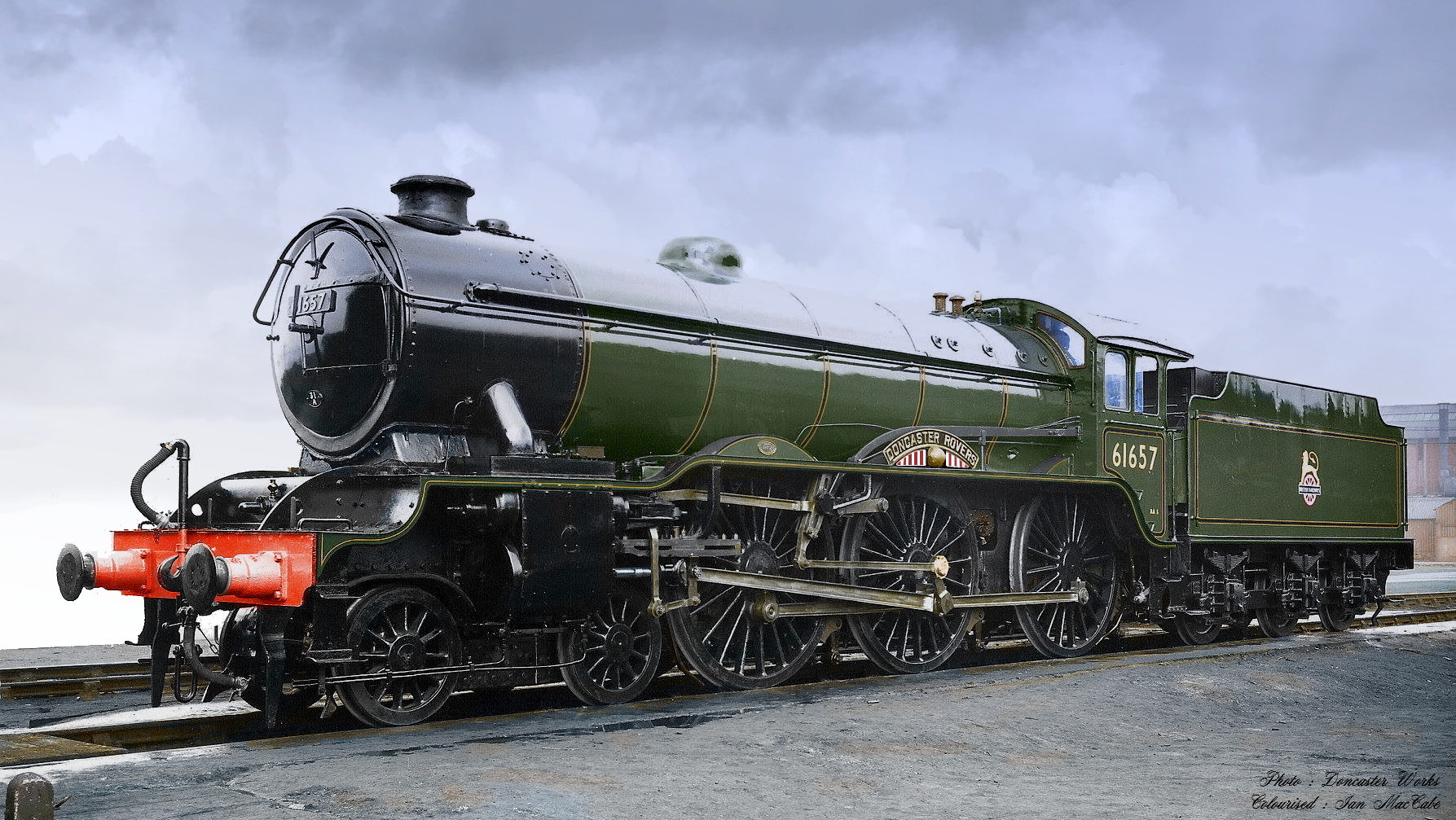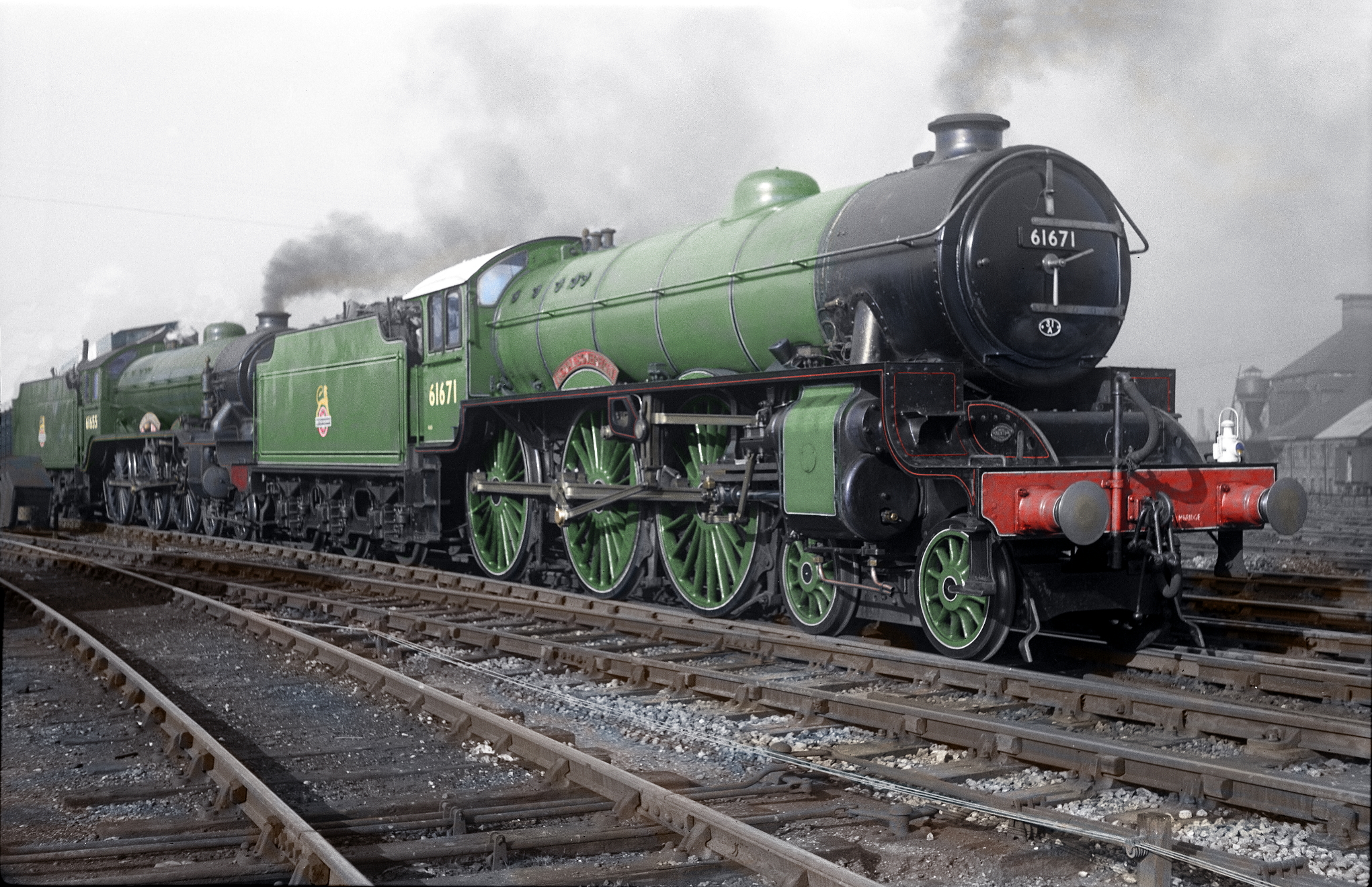Your cart is currently empty!
Sir Nigel Gresley
Sustaining the legacy

Class B17
The London and North Eastern Railway class B17, also known as “Sandringham” or “Footballer” class was a class of 4-6-0 steam locomotive designed by Nigel Gresley for hauling passenger services on the Great Eastern Main Line.

By 1926, the former GER class Holden class B12 locomotives were no longer able to cope with the heaviest express passenger trains on the Great Eastern Main Line between London and Cambridge, Ipswich and Norwich. Yet Gresley was unable to use his larger classes due to severe weight restrictions on the line. The requirement for a lightweight yet powerful 4-6-0 proved to be difficult to achieve.
After several unsuccessful attempts by Doncaster Works to satisfy Gresley’s specification, the contract for the detailed design and building of the class was given to the North British Locomotive Co. in 1927. They used several features from a batch of class A1 Pacifics they had built in 1924. The cab, cylinders, and motion had all been copied directly or slightly modified. Most of the boiler design was taken from the class K3 and class O2 designs. Darlington Works provided drawings for the bogies, and Stratford Works designs for the GE-type 3,700-gallon tender. The resulting class B17 design’s route availability was “certain GER main lines” instead of the full range which was intended, although the LNER did accept the restriction.


Due to weight restrictions it proved to be impossible for all three cylinders to drive the middle-coupled axle. Therefore, the design used divided drive with the middle cylinder driving the leading axle and was positioned forward above the front bogie.
Ten locomotives were built by the North British Locomotive Co., which were allocated the running numbers No. 2800-9. Five further orders were placed with Darlington Works between December 1928 and March 1935 for a further fifty-two locomotives to be delivered between August 1930 and June 1936. A final batch of eleven were ordered from Robert Stephenson and Co. in February 1936 for delivery between January and July 1937; resulting in a total of 73 class B17s built.


The first ten by the North British Locomotive Company were designated class B17, later class B17/1. The second and third batches had boilers supplied by Armstrong Whitworth and different springing and became class B17/2. The next two batches had different springing and were designated class B17/3. However, as the locomotives passed through the works the original springs were replaced by those of the later design and in 1937 the three sub-classes were merged into B17/1. The final Darlington batch introduced in 1936, and those built by Robert Stephenson and Co. had 4,200-gallon tenders and were intended for use in the North Eastern area of the LNER and were designated class B17/4.
The first locomotive, No. 2800, was named Sandringham starting a line of class B17s named after English country houses. Starting with No. 2848, some of the class B17s were named after Football Association clubs. Although some locomotives would be re-named, all 73 class B17s bore a name.


The first class B17s ran the Cambridge services, where they were popular locomotives with both the public and the railwaymen. As more class B17s were delivered, they would work more services including the cross-country service from Ipswich to Manchester. They were also a popular choice for East Anglia’s heavy boat trains. Later class B17s from 1936 with the larger tenders were allocated further afield to Leicester, Sheffield, Neasden, and Gorton. The Sheffield and Leicester class B17s replaced older Great Central Atlantics. After the outbreak of World War 2, the Great Central District class B17s would move to East Anglia.
In September 1937 two locomotives (Nos. 2859 Norwich City and 2870 Tottenham Hotspur) were streamlined in the manner of the class A4s, renamed East Anglian and City of London and intended for use on ‘The East Anglian’ train. They were designated class B17/5. However, the streamlining was cladding for publicity purposes only and had little effect on the overall speed of the locomotive. By 1951 both engines had been stripped of the streamlining altogether.


Between 1943 and 1957 most of the surviving members of the class were rebuilt with a LNER 100A boiler with increased pressure and were designated class B17/6. Ten class B17s were rebuilt by Edward Thompson as 2-cylinder locomotives with a LNER 100A boiler, between 1945 and 1949, becoming the class B2. No more were rebuilt because of the success of the Thompson class B1.
The last class B17s were withdrawn in 1960, and none survived into preservation. Many of the engine plaques from the “Footballer” locomotives were given to their respective football clubs. However, a new class B17, BR No. 61673 (LNER No. 2873) Spirit of Sandringham is being built by The B17 Steam Locomotive Trust based in Sheffield.

